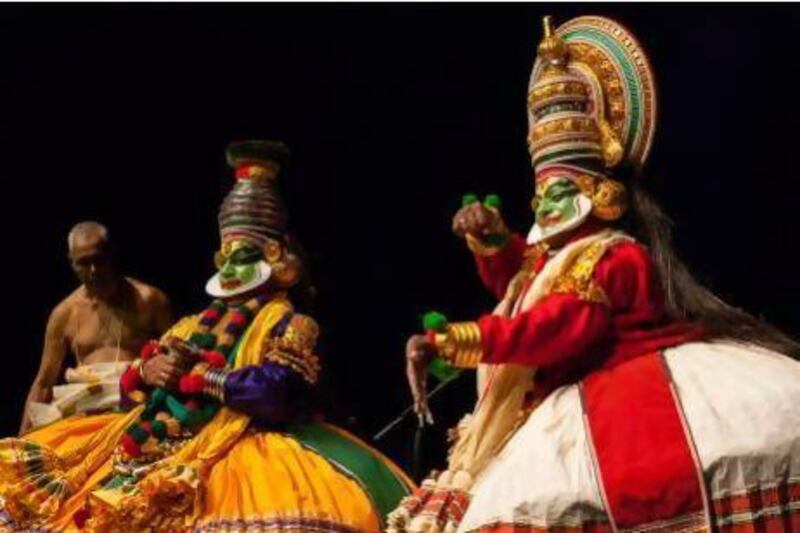Mastering Kerala’s traditional art forms, the theatre-dance kathakali or the 2,000-year-old Sanskrit theatre koodiyattam – which Unesco recognises as part of the Oral and Intangible Heritage of Humanity – is no easy feat. It involves years of physical training and lessons in music, the ancient language of Sanskrit and Hindu scriptures.
Speaking to the kathakali greats Kottakkal Chandrasekhara Warrier and Kalamandalam Rajasekharan, and the koodiyattam exponent Margi Sajeev Narayana Chakyar, you realise that one has to master myriad skills to become a theatre-dance artist while keeping up with the times to ensure the art’s survival.
Born into a family of koodiyattam legends, Chakyar was initiated into the art at a young age by his -father Moozhikulam Kochukuttan Chakyar and his uncle Ammannur -Madhava Chakyar, the founding teachers of the koodiyattam centre in the Margi dance institute in Thiruvananthapuram, Kerala.
“Margi started only in 1981, after we had finished our arangettam [debut stage performance]. My brother and I were the first students,” says Chakyar, who learnt koodiyattam in the old gurukula tradition, where students live with their teachers, cook their own food and focus their life on the art.
A day in the life of a koodiyattam or kathakali student would be unthinkable to children today – classes started as early at 4am. “From 4am to 6am was sadhakam – ‘firming’ the body by standing on bent feet with a straight back while memorising Sanskrit verses, followed by breakfast and classes until noon. After lunch, we had to attend Sanskrit lessons,” says Chakyar, who now teaches at Margi.
Koodiyattam is the oldest surviving Sanskrit theatre, with emphasis on a sound knowledge of the language.
As Chakyar explains, the day continued with "two hours to cook and eat dinner. At 7 [pm], we started kannasadhakam [eye exercises] until about 8.30, followed by learning mudra [hand gestures]."
Kathakali students have a similar routine. Warrier, 67, who started learning kathakali at the age of 12, recalls lessons with his first guru Chethalloor Kuttapanickar: “Our guru couldn’t sleep as he got older and would wake us up at an unearthly hour for eye exercises, which would go on and on with no sign of daybreak. Then we exercised. Our teacher would massage us to tone the body. Only after all that would we see dawn breaking,” he says.
Warrier then joined PSV Natyasangham in Kottakkal, Kerala, for eight years of intensive training. “In Kottakkal, they are strict about two things – no chillies in the diet and no sleeping in the afternoon.”
In 1967, Warrier joined his alma mater as a teacher, went on to become the principal and continued there for 45 years.
Rajasekharan, 58, a former principal of the renowned Kalamandalam Arts Centre, also began classes when he was 12 under the tutelage of Karthikapilly Kuttapanickar. He then joined the six-year kalamandalam course and graduated in 1975 with a gold medal in recognition of being the best student.
Rajasekharan, known for his portrayal of women characters, was then schooled by Madavoor Vasudevan Nair and stayed at his teacher’s house for two years.
“I started taking a few of his classes,” he says. “In 1979, I joined Kalamandalam as a teacher and taught for 31 years.”
So how did he become an expert in streevesham, or women’s roles?
“Not everyone can do it,” he explains. “Once you’re in costume, the audience should see you as a woman. I mostly teach male characters but audiences feel I carry off female roles really well.”
Looking back on his days as a student, Chakyar admits the intensive training did get boring at times, especially when they were teenagers. Koodiyattam, unlike kathakali, is heavy on dialogue or vachikabhinaya. “We had to practise the same thing for months with hardly any time off.”
While Chakyar rues the fact that Margi now only has seven koodiyattam students, Rajasekharan believes the arts should be included in school curricula, which would provide an income to many artists and promote awareness among young children.





